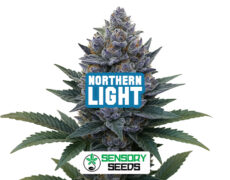Published on: 28/01/2024
MIGRAINE IS A DISORDER THAT AFFECTS MILLIONS OF PEOPLE AROUND THE WORLD. HERE ARE THE TREATMENTS USED TO COMBAT IT AND HOW CANNABIS COULD FIT AMONG THEM
In a context where approximately 10% of the world’s population is affected by migraines , the urgency of finding effective treatments is evident. One of the methods under consideration is the use of medical cannabis derived by cannabis seeds, a topic that is gaining increasing attention in the medical field
This article aims to explore, with an objective approach based on scientific evidence, the potential of cannabis in the treatment of migraine . We will analyze what scientific research has discovered thus far, considering both the potential benefits and implications and risks associated with the use of this substance, thus providing a balanced and informative overview of this evolving topic.
The main characteristics of migraine, a highly debilitating disorder
Migraine is a complex and chronic neurological condition , distinguished from common headache by its intensity and specific symptoms. Characterized by throbbing and often unilateral pain, it manifests itself with attacks that can last from 4 to 72 hours.
In addition to pain, symptoms include nausea, vomiting, and pronounced sensitivity to light and sound. Some individuals also experience phenomena known as aura, which can present in the form of visual disturbances, tingling, and slurred speech.
Unlike a simple headache, migraine is a debilitating disorder that affects approximately 10% of the world’s population, affecting the daily lives of those who suffer from it. Its causes are not yet fully understood, but research suggests an interaction of genetic and environmental factors, along with changes in neurotransmitter levels and activity in the brainstem.
However, some research has identified several potentially influential factors .
Among the most accredited theories is the neurovascular one , which postulates a neurological origin of migraine, complementary to problems at the circulation level. This interpretation highlights the importance of the functions and anomalies of the central nervous system in the occurrence of migraine.
Another crucial aspect is the role of neurotransmitters , in particular serotonin. Studies indicate that low levels of this substance are common in migraine patients, suggesting a link between the deficiency of this neurotransmitter and the onset of attacks.
The brainstem , particularly the periaqueductal gray matter region, is also considered to be a possible epicenter of migraine attacks. Furthermore, vascular and biopsychosocial theories offer further explanations, the former focusing on enlargement of the carotid arteries and the latter on psychological aspects, including stress and personality.
It is clear that migraine is the result of a combination of genetic, environmental and physiological factors . This complexity makes the management and treatment of the disorder a great challenge, requiring a personalized approach based on a broad understanding of its multiple dimensions.
Read also: Red marijuana: characteristics and effects of this variety


The main treatments used in modern medicine for the treatment of migraines
Migraine management requires a multifaceted approach , tailored to the patient’s individual needs. The main treatments are divided into two categories: preventive therapies and acute treatments.
Preventive options include medications such as beta-blockers, tricyclic antidepressants, antiepileptics, and calcitonin gene-related peptide (CGRP) receptor antagonists. These drugs aim to reduce the frequency and intensity of seizures. Recently, new therapies based on monoclonal antibodies have emerged, specifically designed to prevent migraine attacks, offering an innovative option for patients who suffer from them chronically.
For the acute treatment of attacks, triptans are the most commonly prescribed class of drugs. These medicines act on serotonin receptors, relieving the pain and symptoms associated with migraines. Other acute treatments include antiemetics, to manage nausea and vomiting, and NSAIDs (nonsteroidal anti-inflammatory drugs), to control pain.
Furthermore, non-pharmacological therapies also play a fundamental role in the management of migraine. These include relaxation techniques, biofeedback, cognitive behavioral therapy, and lifestyle modifications, such as sleep regulation and stress management.
Recent research has also explored the use of vagal nerve stimulators and transcranial neurostimulation as noninvasive options for migraine treatment . These techniques rely on modulating the brain’s electrical activity to reduce the frequency of attacks.
From what has been said we can conclude that even today migraine therapy is a dynamic and constantly evolving field, which requires close collaboration between patients and healthcare professionals to identify the most effective treatment suited to individual needs. Research continues to develop new therapeutic strategies, promising improvements in the control of this debilitating condition.
And among these, some suggest the use of therapeutic cannabis could be included .
What is the therapeutic potential of cannabis in the treatment of migraines?
The role of cannabis derived by weed seeds in the treatment of migraines is closely linked to its interaction with the body’s endocannabinoid system (ECS). The ECS is a complex physiological system that plays a crucial role in maintaining homeostasis by regulating several bodily functions, including pain, inflammation and the immune response.
This system is composed of cannabinoid receptors, endocannabinoids (molecules produced naturally by the body) and enzymes. The main receptors, CB1 and CB2, are found in different parts of the body, including the nervous system, and can interact with different phytocannabinoids present in cannabis , including THC and CBD, which can therefore influence the functions regulated by the ECS.
On the other hand, medical research indicates that alterations or imbalances in the endocannabinoid system could play a role in the onset of migraines. For example, low levels of anandamide, an endocannabinoid, have been associated with an increase in the incidence of this disorder. Consequently, cannabis, through its phytocannabinoids, could potentially modulate the activity of the ECS, offering relief from migraine symptoms.
For example, one observational study reported that people with migraines who used inhaled cannabis experienced an average pain reduction benefit of -3.3 points on a scale of 0 to 10 within 2 hours of taking it. Furthermore, a survey of medical consumption of cannabis products in Germany, Austria and Switzerland found that 10.2% of migraine patients reported self-medicating with cannabis.
On the other hand, the scientific community remains cautious, as the use of cannabis is not without risks and controversies . Some studies have reported cases where frequent cannabis use could worsen or induce migraines in some patients, a phenomenon known as rebound headaches. Furthermore, the variety of compounds present in cannabis and the differences in administration methods (smoking, vaping, edibles) make it complex to determine the optimal dosage and most effective formulation.


Risks and contraindications related to cannabis
When exploring the use of cannabis as a migraine treatment, it is critical to carefully consider the potential side effects and associated risks. Although cannabis can offer therapeutic benefits, its use is not without possible negative consequences, which may vary based on the type of product, frequency of use, and individual sensitivity.
The most common side effects of cannabis derived by marijuana seeds use include impaired perception and judgment, difficulty concentrating, and possible impact on short-term memory, mostly caused by the plant’s psychoactive compounds, primarily THC. Additionally, frequent, long-term use may increase the risk of addiction and could lead to withdrawal symptoms upon cessation of use.
One particularly important aspect is the potential paradoxical effect of cannabis in causing or exacerbating migraines in some individuals. Known as “rebound headache” or “substance abuse headache,” this phenomenon manifests itself as an increase in the frequency or intensity of migraines, especially following frequent cannabis use.
Furthermore, it is necessary to consider the impact of the substance on the respiratory system , in particular for those who choose to smoke it, a method of intake absolutely prohibited in the UK also with regards to therapeutic use. In fact, the combustion of cannabis can release substances that are harmful and irritating to the lungs, potentially increasing the risk of respiratory problems.
Finally, there are legal and regulatory considerations to take into account, as the use, possession and distribution of the substance are regulated differently in different jurisdictions. These aspects can influence the accessibility and quality of cannabis products like feminized cannabis seeds.
Read also: Everything you need to know about cannabis bonsai: characteristics and growth techniques
In conclusion
Exploring the use of cannabis in the treatment of migraines presents itself as a promising but still immature field in medical research. Preliminary results indicate a potential benefit in reducing the frequency and intensity of migraine attacks, but these need to be confirmed by larger and methodologically rigorous studies.
The role of the endocannabinoid system in migraine onset and its interaction with phytocannabinoids in cannabis offer an intriguing area of research. However, the variability of compounds present in the plant, combined with the complexity of migraine as a neurological disorder, requires a cautious and evidence-based approach .
Looking to the future, it is essential to continue clinical studies to better understand not only the effectiveness of cannabis against this disorder, but also the safety profile, side effects, and optimal modes of administration. This research should also consider individual differences in response to treatment , as well as the long-term impact of the substance.
Furthermore, dialogue between researchers, doctors and policy-makers is essential to ensure that regulatory and legal evolution keeps pace with scientific developments. Only with in-depth understanding and a clear regulatory framework can the responsible and safe use of cannabis in the treatment of migraine be ensured.
Continue reading our articles so you don’t miss any information on the world of cannabis and take a look at our Sensoryseeds shop : you can find numerous varieties of high-quality marijuana seeds , perfect to add to your collection!
💡Takeaways
- Migraine is a complex and chronic neurological condition that affects approximately 10% of the world’s population. Its exact cause is not yet fully understood, but it involves genetic, environmental factors, and neurotransmitters such as serotonin.
- The treatment of migraine requires a multifaceted approach, with preventive and acute therapies. These include drugs, non-drug therapies and new options such as monoclonal antibodies.
- Medical cannabis may have potential in treating migraines due to its interaction with the body’s endocannabinoid system, which regulates pain, inflammation and other functions. Some research indicates that cannabis may modulate the activity of this system to relieve symptoms.
- Cannabis use is not without risks, including psychoactive effects, possible addiction, and the risk of “rebound headaches” that can worsen migraines in some patients. The use of cannabis through smoking can also have negative impacts on respiratory health.
- Although cannabis may have therapeutic potential in migraine, further clinical studies are needed to confirm the benefits and fully understand side effects and optimal modes of administration. It is also important to maintain a dialogue between researchers, doctors and policy-makers to develop clear regulations and ensure the safe and responsible use of cannabis in the treatment of migraine.
Questions answers
What is a migraine and what problems does it cause?
Migraine is a complex and chronic neurological condition, distinguished from common headache by its intensity and specific symptoms. Characterized by throbbing and often unilateral pain, it manifests itself with attacks that can last from 4 to 72 hours. In addition to pain, symptoms include nausea, vomiting, and pronounced sensitivity to light and sound. Some individuals also experience phenomena known as aura, which can present in the form of visual disturbances, tingling and slurred speech.
What are the standard treatments used for migraines?
Migraine management requires a multifaceted approach, tailored to the patient’s individual needs. The main treatments are divided into two categories: preventive therapies and acute treatments. Preventive options include medications such as beta-blockers, tricyclic antidepressants, antiepileptics, and calcitonin gene-related peptide (CGRP) receptor antagonists. For the acute treatment of attacks, triptans are the most commonly prescribed class of drugs. Other acute treatments include antiemetics and NSAIDs (nonsteroidal anti-inflammatory drugs). Additionally, nonpharmacological therapies such as relaxation techniques, biofeedback, cognitive behavioral therapy, and lifestyle modifications are important in migraine management.
Can cannabis be used to combat migraines?
The therapeutic potential of cannabis in the treatment of migraines is closely linked to its interaction with the body’s endocannabinoid system (ECS). The ECS is a complex physiological system that plays a crucial role in maintaining homeostasis by regulating several bodily functions, including pain, inflammation and the immune response. Medical research indicates that cannabis, through its phytocannabinoids, could potentially modulate the activity of the ECS, offering relief from migraine symptoms. However, there are also risks and controversies related to the use of cannabis, and the scientific community remains cautious, calling for further studies to confirm effectiveness and evaluate potential side effects.









